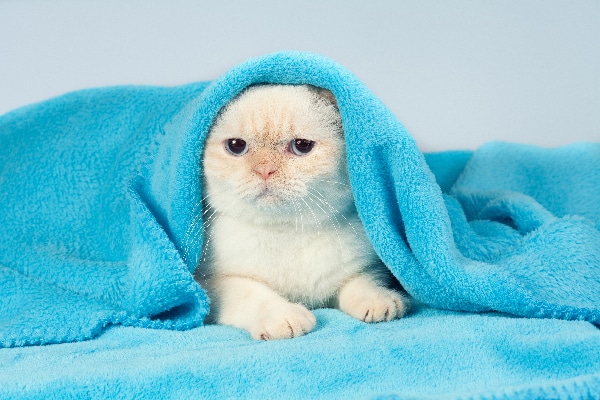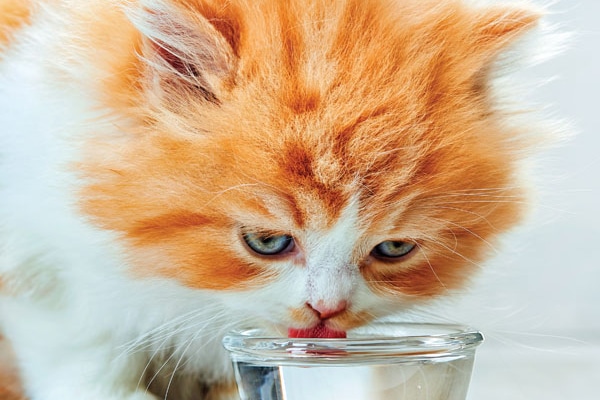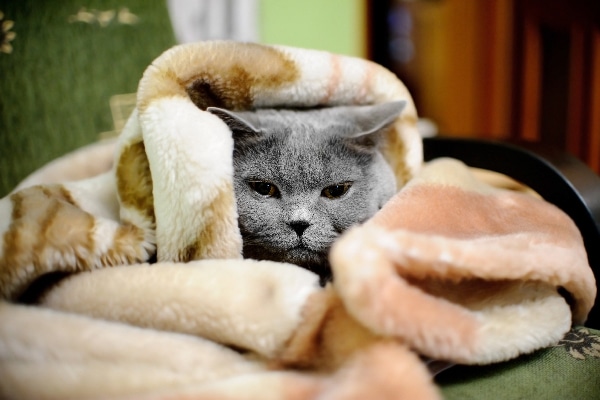If your cat is diagnosed with Cushing’s disease, it can be scary and confusing. So, what exactly is Cushing’s disease in cats? Are some cats more at risk for Cushing’s disease than others? What are the symptoms of Cushing’s disease in cats and how is Cushing’s disease in cats treated? Let’s learn more.
What is Cushing’s disease in cats?

“Cushing’s disease occurs when a cat’s body makes too much of a steroid called cortisol,” says Dr. Patty Lathan, associate professor of Small Animal Internal Medicine at Mississippi State University College of Veterinary Medicine. (Dr. Lathan is an internal medicine specialist who focuses on cats with endocrine diseases, including Cushing’s.)
Cortisol regulates metabolism, reduces inflammation and helps control blood sugar. If your cat has too much cortisol in her body it may lead to multiple medical conditions. Dr. Lathan says that these conditions include “diabetes that’s difficult to control, fragile skin and extreme hunger.”
What cats are most likely to develop Cushing’s disease?
Cushing’s disease in cats is much more likely to develop in older felines. However, Dr. Lathan also cautions that any cat can develop Cushing’s disease. Additionally, she explains that cats with diabetes that is difficult to control are more likely to have Cushing’s in addition to their diabetes diagnosis.
Symptoms of Cushing’s disease in cats

What might indicate Cushing’s disease in cats? Watch for a cat that drinks more and urinates more often than normal and weight loss that is likely accompanied by an increased appetite. Dr. Lathan recounts that she once “treated one cat whose owner brought him in because he was getting very aggressive about stealing food off the owners’ plate and from the dogs!” Dr. Lathan also cautions that “some cats with Cushing’s don’t have diabetes, and these cats may actually gain weight.”
What are some other signs of Cushing’s disease in cats? “The most striking sign [of Cushing’s] in some cats is that their skin is very thin and fragile, and tears easily,” Dr. Lathan says. All of these are symptoms that should prompt you to bring your cat to your veterinarian for a full examination.
Treatment for Cushing’s disease in cats
Dr. Lathan says that the best treatments for Cushing’s disease in cats could mean surgical intervention or involve medication. “A medication called trilostane (Vetoryl) is FDA approved to treat Cushing’s disease in dogs, but not cats,” Dr. Lathan explains. “However, we’ve had good success using trilostane in cats, as well.” This may be a medication your veterinarian will discuss prescribing to your cat, and it may really help. “The disease used to be much more difficult to treat before trilostane was available,” Dr. Lathan says.
Health and happiness for cats with Cushing’s disease
If your cat is diagnosed with Cushing’s disease, it might feel scary, overwhelming and even confusing. This might be particularly true if your cat has multiple medical conditions. Dr. Lathan says parents of cats with Cushing’s disease should know this: “Cats with Cushing’s disease may also have diabetes and/or skin issues, so treatment may seem complicated,” Dr. Lathan says. “However, with patience and dedication, these cats can attain a great quality of life.”
More resources for Cushing’s disease in cats
Because cats with Cushing’s disease often have diabetes that is difficult to manage, The American Animal Hospital Association suggests that cat parents also read its Diabetes Management Guidelines. Dr. Lathan is a contributing author to this guide, and these guidelines are a good source of support and education.
Plus, should YOU worry about Cushing’s disease yourself? Learn more about Cushing’s disease here >>
Thumbnail: Photography ©gilotyna | iStock / Getty Images Plus.
Sassafras Lowrey is an award-winning author whose novels have been honored by the Lambda Literary Foundation and the American Library Association. Sassafras is a Certified Trick Dog Instructor and assists with dog agility classes. She lives and writes in Brooklyn with her partner, a senior Chihuahua mix, a rescued Shepherd mix, a Newfoundland puppy, two bossy cats and a semi-feral kitten. Learn more at sassafraslowrey.com.








